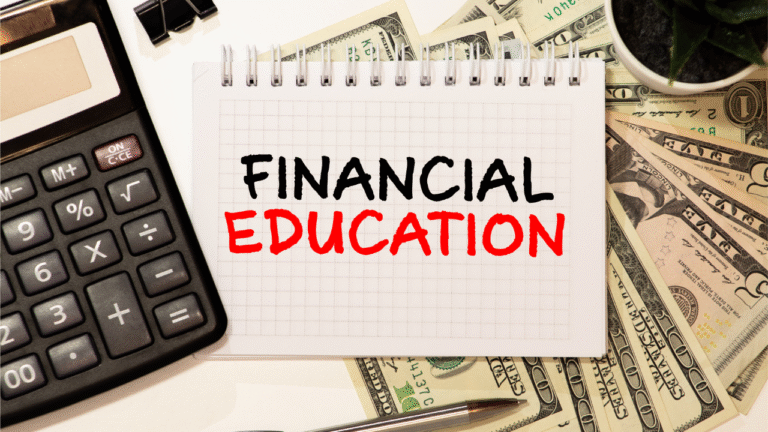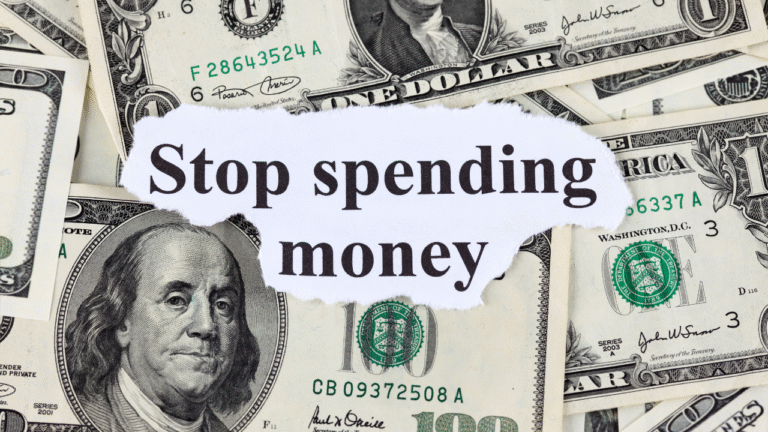Introduction
Struggling with multiple debts from your Target credit card, student loans, and car payments? You’re not alone. The snowball vs avalanche method debate has helped millions of Americans tackle their debt strategically. As of 2025, with inflation continuing to impact household budgets, choosing the right debt elimination strategy is more crucial than ever.
Both methods have transformed financial lives across the United States, but which one fits your situation? Let’s break down these proven debt payoff strategies with real-world examples and current data.
Table of Contents
What Are the Snowball and Avalanche Methods?
The Debt Snowball Method Explained
The debt snowball method focuses on psychological momentum. You pay minimum amounts on all debts while throwing every extra dollar at your smallest balance, regardless of interest rate.
Here’s how it works:
- List all debts from smallest to largest balance
- Pay minimums on everything except the smallest debt
- Attack the smallest debt with maximum payments
- Once paid off, roll that payment to the next smallest debt
- Repeat until debt-free
Real Example: Sarah from Phoenix has these debts:
- Best Buy credit card: $800 (18% APR)
- Car loan: $12,000 (6% APR)
- Student loan: $25,000 (4% APR)
Using the snowball method, Sarah tackles the Best Buy card first, despite its high interest rate being lower priority than the balance amount.
The Debt Avalanche Method Breakdown
The debt avalanche method prioritizes mathematical efficiency. You target the highest interest rate debt first while maintaining minimum payments elsewhere.
Step-by-step process:
- List debts from highest to lowest interest rate
- Pay minimums on all debts
- Direct extra payments to the highest rate debt
- Move to the next highest rate once paid off
- Continue until all debts are eliminated
Using Sarah’s example again: With the avalanche method, she’d focus on the Best Buy card (18% APR) first, then the car loan (6% APR), and finally the student loan (4% APR).
Snowball vs Avalanche Method: Which Saves More Money?

The Mathematics Behind Each Strategy
According to Federal Reserve data, the average American household carries $6,194 in credit card debt as of 2025. The avalanche method typically saves more in total interest payments.
Interest Savings Comparison:
- Avalanche method: Can save 15-30% more in total interest
- Snowball method: Costs more in interest but provides faster psychological wins
Let’s examine a realistic scenario with typical American debt loads:
Example: Chicago family with $45,000 total debt:
- Credit Card 1: $5,000 at 24% APR
- Credit Card 2: $3,000 at 19% APR
- Personal loan: $15,000 at 12% APR
- Car loan: $22,000 at 7% APR
With $800 extra monthly for debt payoff:
- Avalanche method: Total interest paid = $8,750, paid off in 4.2 years
- Snowball method: Total interest paid = $11,200, paid off in 4.5 years
The avalanche method saves $2,450 and 3 months.
Success Rates and Behavioral Psychology
However, money isn’t everything. Research from Northwestern’s Kellogg School shows that snowball method users are 20% more likely to eliminate all debts compared to avalanche users.
Why? Quick wins create momentum. Paying off that $800 Walmart credit card in two months feels amazing and keeps you motivated for the longer journey ahead.
When to Choose the Snowball Method
Perfect Scenarios for the Snowball Approach
Choose the snowball method if you:
Have multiple small debts: Store credit cards from Target, Home Depot, or Amazon with balances under $2,000 each are perfect snowball candidates.
Need motivation boosts: If you’ve tried paying off debt before and failed, the psychological wins matter more than mathematical perfection.
Struggle with complex planning: The snowball method is simpler to execute and track.
Real Success Story: Mike from Denver used the snowball method on seven different credit cards totaling $18,000. He paid off three cards in the first five months, which motivated him to stick with the plan through completion.
2025 Snowball Strategy Updates
With rising costs affecting American families, consider these modern snowball adaptations:
- Emergency fund first: Build $500-1,000 before aggressive debt payoff
- Employer match priority: Never skip 401(k) matches for debt payments
- Inflation hedge: Factor in rising minimum payments when planning timelines
Smart money management means adapting strategies to current economic conditions. Many Americans find that tracking progress through apps makes the snowball method more engaging than ever.
When the Avalanche Method Makes Sense
Ideal Situations for Avalanche Users
The debt avalanche method works best when you:
Have high-interest debt: Credit cards charging 20%+ APR demand immediate attention, especially with 2025’s elevated rates.
Are mathematically motivated: If spreadsheets excite you more than quick wins, avalanche is your method.
Have large debt loads: The bigger your total debt, the more the interest savings matter.
Maintain good discipline: Avalanche requires patience since your first payoff might take 12+ months.
Advanced Avalanche Strategies for 2025
Rate stacking: Some families combine both methods by avalanching high-rate debt while snowballing small balances under $1,000.
Cashback integration: Use rewards from cash back apps for daily shopping to accelerate your highest-rate debt payments.
Tax refund power: Direct your 2025 tax refund entirely to your highest-rate debt for massive progress.
Real-World Implementation Guide

Setting Up Your Debt Payoff System
Step 1: Complete Debt Inventory List every debt including:
- Balance amount
- Interest rate
- Minimum payment
- Due date
Don’t forget often-missed debts like medical bills, family loans, or hidden bank fees that compound monthly.
Step 2: Calculate Extra Payment Capacity Review your budget for additional debt payment funds. Consider:
- Canceling unused subscriptions (use tools to track and cancel subscriptions)
- Reducing dining out expenses
- Working overtime or side gigs
- Selling unused items
Step 3: Choose Your Method Based on your personality and situation, commit to either snowball or avalanche. Write down your “why” for extra motivation during tough months.
Tracking Progress in 2025
Modern debt payoff requires modern tools:
Spreadsheet tracking: Create monthly snapshots showing balance reductions and interest saved.
Apps and automation: Set up automatic transfers to ensure consistency in your debt payments.
Visual motivation: Many successful debt-payers create charts or thermometers showing progress toward their debt-free goal.
Common Mistakes to Avoid
Pitfalls That Derail Debt Payoff Plans
Mistake #1: Not stopping new debt Cut up credit cards or freeze spending to prevent backsliding. The most perfect debt strategy fails if you keep adding balances.
Mistake #2: Ignoring emergency funds Without a small emergency buffer, unexpected expenses force you back into debt. Even $500 prevents most financial emergencies from derailing your plan.
Mistake #3: All-or-nothing thinking Life happens. Missing a month doesn’t mean failure. Restart immediately rather than abandoning your debt payoff strategy entirely.
2025-Specific Challenges
Inflation impact: Rising costs mean your extra payment capacity might shrink. Adjust expectations while maintaining consistency.
Rate changes: Variable rate debts change with Federal Reserve decisions. Monitor rates and adjust priorities accordingly.
Economic uncertainty: Job market changes affect debt payoff timelines. Build flexibility into your strategy rather than rigid payment schedules.
Hybrid Approaches and Advanced Strategies
Combining Snowball and Avalanche Methods
Some families successfully blend both approaches:
Small balance priority: Use snowball for debts under $1,500 while avalanching larger, high-rate balances.
Time-based switching: Start with snowball for motivation, then switch to avalanche after paying off 2-3 small debts.
Rate threshold hybrid: Snowball all debts except those over 20% APR, which get avalanche treatment immediately.
Debt Consolidation Considerations
Before choosing snowball vs avalanche method, evaluate consolidation options:
Balance transfer cards: 0% promotional rates can eliminate the need for either method temporarily.
Personal loans: Fixed rates around 6-12% might simplify multiple high-rate credit cards into one payment.
Home equity options: Homeowners might access lower rates, but never risk your home for unsecured debt.
According to the Consumer Financial Protection Bureau, Americans paid over $130 billion in credit card interest and fees in 2022 alone, making strategic debt payoff more important than ever.
FAQs : About the Snowball vs Avalanche Method
Q1. What is the difference between the snowball vs avalanche method?
The snowball vs avalanche method differs in focus: snowball targets the smallest balances first for motivation, while avalanche pays off highest interest rates first to save more money.
Q2. Which debt payoff strategy is better for becoming debt-free faster?
If you want quick wins, the snowball method gives motivation to stay on track. If you want to save the most money and time overall, the avalanche strategy is usually better. Both are proven debt payoff strategies that can lead to becoming debt-free.
Q3. Can I combine the snowball vs avalanche method into a hybrid strategy?
Yes, many Americans mix debt payoff strategies by snowballing small debts under $1,000 while using the avalanche method for high-interest credit cards. This hybrid approach balances motivation and savings on the road to being debt-free.
Q4. Is the snowball vs avalanche method effective for credit card debt?
Absolutely. These debt payoff strategies are widely used for credit cards. Avalanche saves more on interest, while snowball helps you stay motivated. Choosing the right method can accelerate your journey to becoming debt-free.
Q5. How do I know which debt payoff strategy is right for me?
If you’re motivated by progress and want quick psychological wins, choose the snowball method. If you prefer saving more money in the long run, pick the avalanche method. The best debt payoff strategy is the one you’ll consistently follow until you’re debt-free.
Conclusion

The snowball vs avalanche method debate ultimately comes down to understanding yourself. If you need quick wins and motivation, snowball delivers the psychological boost that keeps you committed long-term. If you’re motivated by maximizing savings and can handle delayed gratification, avalanche saves more money.
Remember, the best debt payoff strategy is the one you’ll actually follow through to completion. Whether you choose snowball, avalanche, or a hybrid approach, consistency beats perfection every time.
Your journey to financial freedom starts with a single decision. Choose your method, create your plan, and take that first step today.
Ready to transform your financial future? Start saving smarter with SmartSaveUSA.com and discover more proven strategies to build wealth and eliminate debt for good.









